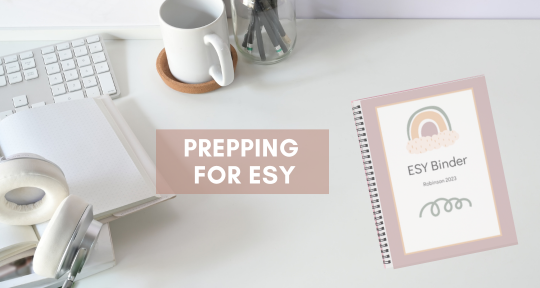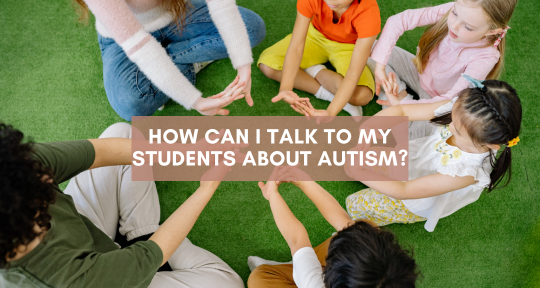As the only self-contained teacher in my school and the teacher who primarily works with autistic kids, I have been spearheading our school’s Autism Awareness and Acceptance Month activities for the past few years. When I first started organizing school-wide events, I had a teacher approach me to let me know she didn’t think it was a good idea to do this in an elementary school. “I just think the kids are too young to be learning about this. They aren’t going to understand, and it’s going to confuse them. Autism is a really complicated disorder.” You might be thinking the same thing, or maybe you’ve heard a similar comment but you know that it is still important to work on awareness and acceptance even at the elementary level. I’m going to unpack this mindset, and then I have some tips for having these conversations with young students.
Autism Needs to Be Talked About
This idea that autism is complicated, a hard disorder, difficult to understand, and confusing is a very prevalent mindset. People don’t understand autism well- but that is exactly why it is so important to have these conversations! When we tell kids that something is too hard for them to understand or confusing, we’re sending the message that there is something bad about the thing we won’t talk about. Remember, developmentally kids at this age think in black-and-white terms. Things are either bad or good, wrong or right- it isn’t until middle school when their brains can start to process and understand dichotomies and nuances.
When we don’t talk about autism or brush over the subject, we’re sending the signal to our students that there is something wrong with autism. Why is that a problem? First, you may have students in your classroom who have siblings or family members who are autistic. Imagine how that child must feel when their teachers promote the idea that there is something wrong or bad with their family member. Imagine how harmful it is to that family to not feel embraced and supported by their community. We want to be mindful that some students have a very personal connection to autism that we as teachers might not be aware of.
Second, even if they don’t have a classmate with autism this year, they might in the future and they will certainly encounter autistic people in their lifetime. When we aren’t educating students about autism, they are left to create their own conclusions from movies and TV, what their peers say, or what they observe. This isn’t providing the whole picture- that autism is a spectrum, that differences are bad, and that everyone has different support needs. Armed with that information, our students can become better allies and friends- at the bare minimum, they will be able to interact with autistic people in a more respectful way. Social skills are skills that can be taught- especially social skills with people who are different from you. Elementary school is great time to set the foundation and teach students the skills they need to be more respectful and inclusive of others.
Third, when we don’t talk about autism we leave room for harmful or negative stereotypes to persist. I can’t tell you the number of times that I’ve heard kids talk about my students as “bad” or “not able to listen” or “can’t communicate.” And this is coming from 5-9 year olds! Equipping students with accurate and factual knowledge is not going to overwhelm or confuse them- it will provide clarity and understanding.
How Do I Teach My Students About Autism?
Let’s talk about how you go about educating and teaching your class of elementary students about autism. In my experience, there are several points that are crucial to review with students. The key is to be very clear and direct. Sometimes, when talking about disabilities, people use language that isn’t clear. For example, have you ever heard someone say, “we all have our differences!” when a child asks them why someone can’t walk? That doesn’t provide any concrete information that will be useful for them to process and understand. It would be better to say- “Some people can’t walk because of an accident, or they were born that way, or because it is hard for them. There are lots of different ways to move around including walking, using a wheelchair, a walker, or crutches.” Here are the points that I believe are important to underscore with young children about autism:
- Autism is a disability. Minimizing that autism is not a disability (have you every heard someone say it is a superpower?) minimizes the challenges that person will face as a result of their disability. Being very clear with your students that some people are born with brain differences makes it clear that this is not something the child with autism can control, it is not something that they “caught”, and it is not something that will go away.
- All people can communicate. Just because they might not use their voice to communicate does not mean that someone can’t communicate. It doesn’t mean that they don’t have language or things to say. Exploring the different ways that people can communicate is important to teach students because it teaches them to presume competence.
- Students with autism can learn. Just because you have a classmate who is working on different work than you are or in a different classroom doesn’t mean they can’t learn or they are “dumb.” This is something to be very clear about, because sometimes students associate intelligence with only what they are learning in school. Learning and intelligence can look different for every child, especially children with autism.
- Stimming isn’t weird. When you lay the foundation that autism is a brain difference and that means that they will do things differently or act differently, it is an easy transition to talk about stimming because this is a behavior that can sometimes isolate the autistic child. Having their peers understand that they aren’t doing anything scary or bad when they stim is important.
- You can be a friend to someone with autism. Being a friend doesn’t look the same from one relationship to the next. It is important to highlight for students what being a good friend to someone who is autistic looks like. Be very clear here- it means including students but accepting when they say no or want to do something else. It means not assuming they can’t do something. It means respecting when they need time alone. It means honoring their preferred method of communication.
Whether you highlight these points as part of a read aloud, a presentation, or as part of an informational activity, the main thing to remember is to be clear and direct. Our goal in all this is to create a more inclusive school environment for our autistic students. Making sure we equip their classmates with accurate and clear information is the key.
If you need help organizing this information into a format that is appealing and understandable for young students, I have several resources you might be interested in. First is a presentation all about autism geared specifically for elementary age students.

Second, try incorporating this knowledge into an activity such as a Myth or Fact challenge, a Core Board Activity, or other hands-on learning experience. I have some ideas for different activities that have been designed with young students in mind in the Autism Acceptance Month activity menu.

Crafts are a great way to encourage young students to interact with information. The infinity sign craft or informational coloring page are great, low-prep activities you can print and implement quickly!



